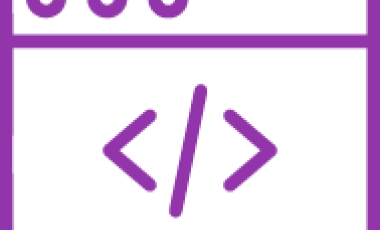Which Is Better: Agile Development Model or Waterfall Model?
A software development methodology refers to a framework that guides the planning, production, and deployment of development projects. There are several possible methodologies, but here we mainly focus on the sequential and iterative frameworks. Agile and Waterfall are two unique methods in the software development process.
Waterfall model
The Waterfall model refers to a linear model of software design and uses a sequential design process. In this process, the software development lifecycle flows sequentially from the beginning to the end, in various stages, that includes Conception, Initiation, Analysis, Design, Construction, Testing, Implementation, and Maintenance.
In this approach, a development project is treated as a whole with different stages, right from the start to the finish. Each phase is dependent on the work performed during the previous stage, ultimately leading to completion and full deployment. Quite often, the Waterfall model does not involve opportunities for feedback and alterations between stages.
Example: Government Software Project
Consider a government project to develop a tax filing system. Given the clear requirements and regulatory constraints, the Waterfall model is suitable. The project can be meticulously planned, with each phase, from requirement analysis to deployment, executed in a linear fashion. This approach ensures compliance and thorough documentation, which is critical for government projects.
Strengths of the sequential development model include:
- The Waterfall method adopts a linear and straightforward approach. In addition, it is simple, easy to understand and map-out, and satisfies the expectations of clients with regard to the structuring of project schedule.
- It engenders a level of discipline throughout the software development lifecycle and helps to monitor the overall progress of the project.
- Testing can be done, errors can be corrected, and products can be perfected before progressing to the next phase. This dramatically reduces the possibility of discovering an error at a later stage in the project.
- Clear and precise documentation of the product that benefits the team as well as the client.
Although the Waterfall software development model is generally used because of its simplicity and familiarity, it need not be the ideal approach for every project.
Agile Web Development
Agile model is a software development philosophy aimed at better strategies for developing software products. Agile software development involves an incremental and iterative approach to design and development. In the agile model, the design process is divided into individual components that designers need to work on. By employing this method in the software development lifecycle, designers can respond to changes in needs as the project progresses. The agile model has attained significant popularity in the last few years, as it considers people, customer collaboration, and feedback as the core factors responsible for project success. Agile development strategy may be beneficial for web development as it focuses on working and collaborating with real people.
Example: E-Commerce Website Development
Consider the development of an e-commerce website. The requirements and market trends for such a project are likely to change rapidly. Using Agile, the development team can release a basic version of the site, then iteratively add features like advanced search options, user reviews, and personalized recommendations based on continuous feedback from users and stakeholders.
Benefits of Agile
Some of the major benefits of agile web development are:
- Responds to changes in project requirements as the project evolves.
- Frequent communications between the client and the project team provides the client a clear understanding of the process. Moreover, it ensures that all the players are actively participating in the evolution of the product and displays the progress of the project as iteration in each stage is completed.
- An even workflow which ensures that all team members are productive. This also avoids the potential bottlenecks and enables the team to be part of simultaneous projects.
- In this method, the team members are not only responsible for executing individual tasks, but also in guiding the iterations and evolution of the project. This enables the team members to bring more of their own expertise in the project, and fosters a sense of ownership.
At Zyxware, we have sufficient expertise in Agile software development, which enables us to promptly respond to the rapidly growing requirements of the enterprise market. As mentioned above, one of the foremost benefits of this approach is the adaptability and flexibility that it offers, and end-users can collaborate closely with software developers every step of the process. Zyxware has an experienced team of professionals you can entirely rely on to deliver fast results. So, whether you want new application development or transition an existing enterprise system, do contact us for your agile software development needs.



